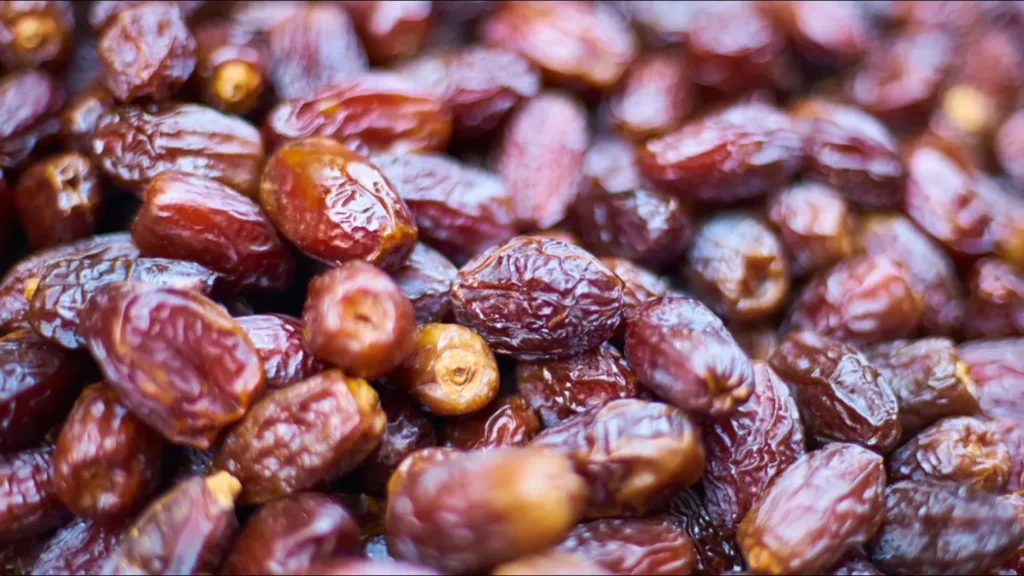Phoenix Dactylifera
Phoenix Dactylifera (date palm) belongs to the palm (Arecaceae) family, and its fruit has been used in Iranian, ancient Rome, ancient Egyptian, Chinese, and Greek traditional medicine to increase sexual potency and pleasure in men and women and reduce menopausal symptoms in women (Qadir et al., 2020).

This plant contains essential elements such as cobalt, copper, fluorine, magnesium, manganese, selenium, and zinc and also vitamins (A, B1, B2, B3, B5, B6, B9, C, E, and K) and shows beneficial effects in improving female fertility.
Various studies have shown the anticancer and anti-inflammatory effects of this plant, its nephroprotective and hepatoprotective effects, as well as its protective effects against toxicity-induced reproductive dysfunction in female/male animal models (Taleb et al., 2016).
Analysis of the fruit and seed of this plant showed the presence of polyphenolic compounds (isoflavonoids and flavonoids) (Souli et al., 2018). Studies show that saponins in this plant enhance the blood flow toward the female reproductive system by releasing NO and stimulating the HPG axis (Bahmanpour et al., 2006).
A study in mice showed that Phoenix dactylifera extract due to the presence of gonadotropin-like biocomponents such as rutin, sterols, carotenoids, and androsterone stimulates oogenesis and increases the number of antral and secondary follicles and the growth and maturation of preantral follicles.

In PCOS, an elevated LH to FSH ratio increases the synthesis of androgens, insulin, and insulin-like growth factors (IGFs), which in turn increases the number of cystic follicles (Hosseini et al., 2014; Salek Abdollahi et al., 2015). However, the study of Karimi Jashni et al. (2016) showed that the consumption of P. dactylifera extract due to the presence of estrogen-like compounds reduced the LH to FSH ratio and the number of cystic follicles, modulated estrogen and androgen synthesis, and increased the number of secondary and antral follicles (Karimi Jashni et al., 2016).
The estrogenic compounds of this plant extract can be used to treat uterine disorders as they have been shown to reduce endometrial tissue degeneration, necrotic patches, and hyperplasia in endometrial glands (El-Mansi et al., 2019).